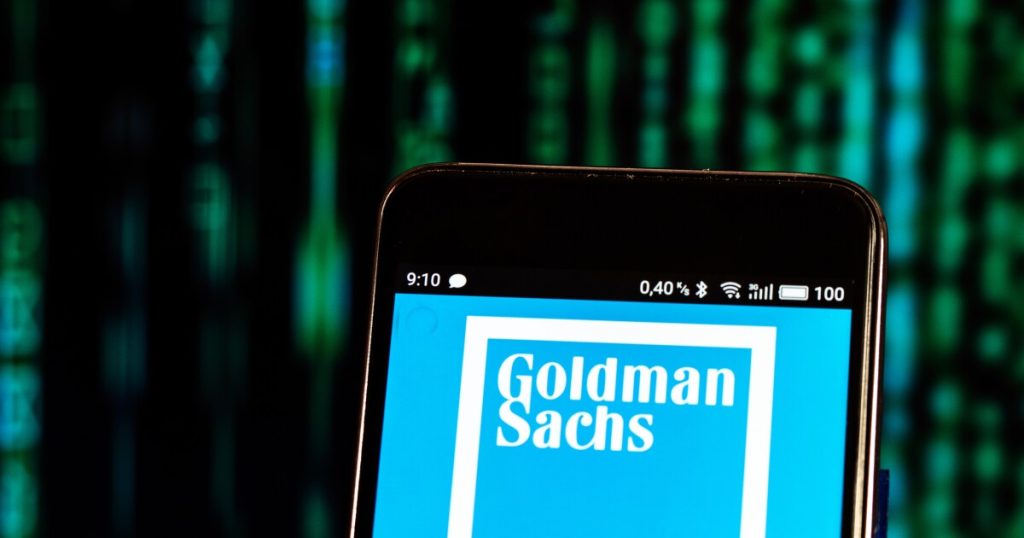Adobe Stock
Goldman Sachs is trying to make the best out of its failed foray into consumer lending.
The New York bank said Tuesday that it’s taking steps to squeeze profits out of its credit card partnerships with Apple and General Motors, even while acknowledging that those deals may not be in its long-term plans.
Goldman, which has long-term contracts with Apple and GM, doesn’t have the “unilateral right to exit those partnerships,” said CEO David Solomon. So the investment banking giant is instead concentrating on making the deals more efficient.
“Our focus at the moment is on managing them better, getting rid of the drag and bringing them to profitability,” Solomon told analysts on the company’s third-quarter earnings call. “And we’re making progress, both in the way we run them and against the cost base that we put against them.”
Goldman has reportedly sought to exit its Apple partnership, with the Wall Street Journal reporting in June that the company was talking to American Express about taking over.
Goldman’s consumer lending push, which began in 2016, has racked up losses. But the company is now focused on “reducing the drag over the course of the next 12 to 24 months and ensuring we operate them better,” Solomon said.
Bill Johnson, a former top Citigroup credit card executive, joined Goldman Sachs in August to oversee those efforts.
“We’ll continue as we go forward to work constructively with our partners and examine what’s best in the long run for Goldman Sachs,” Solomon said.
Goldman has been taking various steps to unwind its costly push into consumer lending.
Last week, the bank said that it had reached a deal to sell the GreenSky home improvement loan platform for an undisclosed price. Goldman bought GreenSky for $1.7 billion in 2022 as home renovations were booming. But it wrote off some $506 million in assets tied to its GreenSky purchase last quarter after reporting a similar write-down a quarter earlier.
Goldman has also stopped offering the personal loans it previously made under the umbrella of its Marcus consumer brand — and has started selling off its existing personal loans.
Goldman’s stock price fell 1.6% to $309.36 on Tuesday as the company reported net earnings of nearly $2.1 billion, down sharply from $3.1 billion in the same quarter a year ago. The company’s third-quarter earnings took a hit from the sale of GreenSky to a group of institutional investors led by the firm Sixth Street.
Analysts appeared to take a positive view of the decision to sell GreenSky.
“While costly, the company’s decision to exit the consumer loan business, over the long run, removes a distraction for the company and investors,” RBC Capital Markets analyst Gerard Cassidy wrote in a note to clients.
Goldman has “course corrected its failed strategy to expand into consumer banking,” Kenneth Leon, research director at CFRA Research, wrote in a note. The exit will give the investment bank more flexibility to focus on its core strengths and seek acquisitions in its wealth management division, he noted.
During the earnings call, Wells Fargo analyst Mike Mayo asked Goldman executives “who is accountable and who pays the price for the losses” tied to its questionable push into consumer lending.
Solomon said the company’s senior leadership is “responsible and accountable for any decision that we make” and that he is “happy that we pivoted” away from consumer lending.
“I think it’s important for companies to try things, for companies to learn and adapt,” Solomon said. “When you make a decision that you think is a wrong decision for shareholders and the firm, you adjust accordingly. So we’re doing that, and we’re moving forward.”
In the meantime, as some cardholders struggle to make payments, Goldman Sachs is charging off a portion of its consumer loan portfolio. The company is focused on limiting those charge-offs, Chief Financial Officer Denis Coleman told analysts, but it expects to see elevated charge-offs in the coming months.
During the third quarter, Goldman’s net charge-off ratio for consumer loans actually dipped to 5.1% from 5.8% during the three previous months. Still, the charge-off rate was up from 2.9% in the third quarter of 2022.
Solomon said the U.S. economy and American consumers have been “more resilient” than some observers feared, though there are signs of softness as Goldman talks with CEOs about the economic outlook.
Read the full article here














